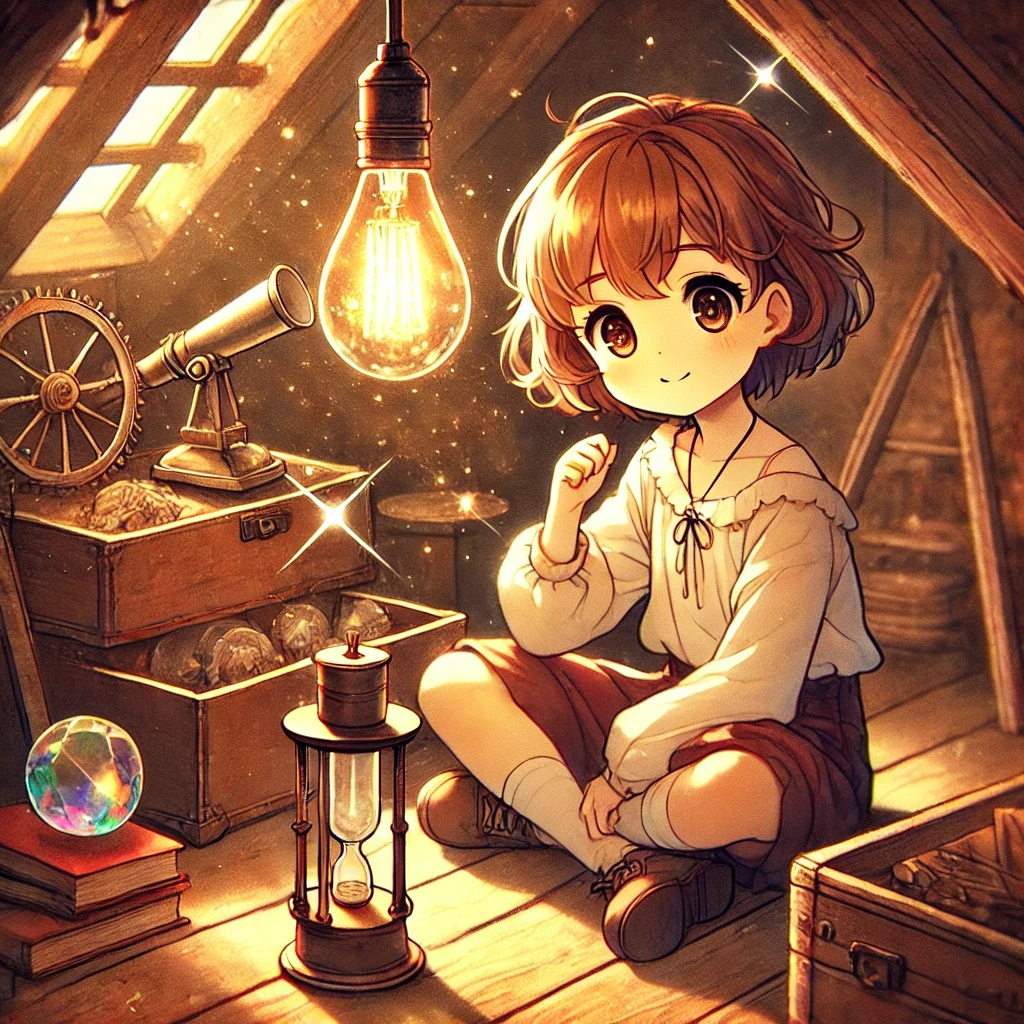Once upon a time, in the little town of Brightwood, there lived a curious girl named Maria. She loved asking questions, solving puzzles, and exploring the world around her. Her favorite place was the old attic in her house, where she kept her collection of interesting objects: a magnifying glass, a prism, and even an old telescope that had belonged to her grandfather.
One evening, Maria was sorting through an old box of letters when she found one from her grandfather. She smiled as she unfolded the paper, eager to read his words. But as she reached for her water glass, she accidentally knocked it over, spilling water onto the letter!

“No!” she gasped, quickly lifting the paper. Her heart pounded as she watched the ink spread and fade. The top of the letter was still readable, but as she moved down the page, the words dissolved into faint, watery smudges.
Maria felt a lump in her throat. This was one of the last letters he had written to her before he passed away. What if she had lost his words forever? She held the letter up to the attic light, hoping to make out the faded lines. Some words flickered back into view under the bright glow, but in the dimmer parts of the room, they vanished completely.
A thought sparked in her mind. “Why does the ink fade like this? And why can I read some parts better when the light is brighter?”
Her grandfather’s voice echoed in her memory: “Maria, my dear, a keen mind sees the world with wonder, but a wise mind writes down what it sees. Every great discovery begins with an observation, so write them down in this journal, you never know what secrets they may reveal.”
Determined to solve the mystery, Maria grabbed her flashlight. She turned off the attic lights and held the flashlight close to the letter. The words at the bottom were visible again! But as she moved the flashlight farther away, the faint words disappeared into the paper.
She measured the distance and scribbled notes, tracking how much light reached the paper at different distances. “If I move further away, the words become much harder to read. But how much harder?” she asked herself. Maria decided to investigate further.
She set up a series of experiments, moving the flashlight closer and farther from the letter. She even placed other objects nearby, a toy, a book, a glass of water, to see how their brightness changed at different distances. She noticed a pattern: every time she doubled the distance, the light on the page became much weaker, making the words that previously looked faint nearly invisible after each change in distance.
The next day, Maria visited her teacher, Mr. Oliver, carrying her notebook and the faded letter. “Mr. Oliver, something strange happened to my grandfather’s letter,” she said, explaining her experiment. “Why does the light make such a big difference?”
Mr. Oliver smiled and reached into his drawer, pulling out a small candle. He placed it on his desk and turned off the classroom lights. “Let’s test something together,” he said. “Stand close and tell me how bright the flame looks.”
Maria stepped near. “It’s bright and clear.”
“Now take three steps back,” he instructed. She did, and the flame looked dimmer. “What if I move five steps back?” she asked.
“Try it,” he encouraged.
As she moved farther away, the flame looked smaller and much weaker. Mr. Oliver nodded. “You’re noticing something called the Inverse Square Law. Light doesn’t just fade randomly, it spreads out. If you move twice as far, the light spreads over four times the area, making it appear four times dimmer. That’s why your letter’s faint ink disappeared in low light. The farther your flashlight was, the less light reached the page.”
Maria’s eyes widened. “So that’s why the stars look so faint! They’re so far away that their light spreads out before it reaches us.”
“Exactly!” Mr. Oliver beamed. “This same rule applies to sound, gravity, even radio signals! Scientists use this principle to understand the universe. And you figured it out just by being observant.”
Maria’s heart swelled with excitement. She rushed home and spent the next week testing the rule with different objects. She even taught her little brother using his toy car headlights. Her discovery helped her see the world differently: why stars twinkle, why the sun feels weaker in winter, and even why voices fade in a large auditorium.
She ran her fingers over the faded letter one last time. “Grandpa was right,” she whispered. “Observations hold the key to discovery.”
From that day on, Maria continued to ask questions, knowing that there were many more mysteries waiting for her to explore.

